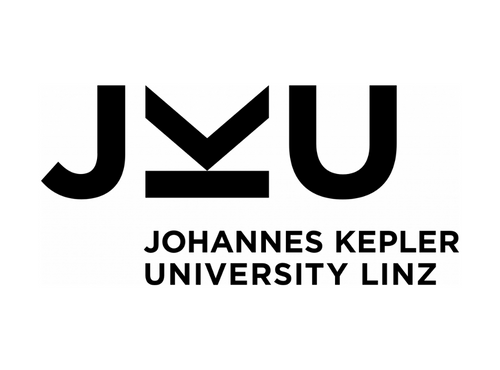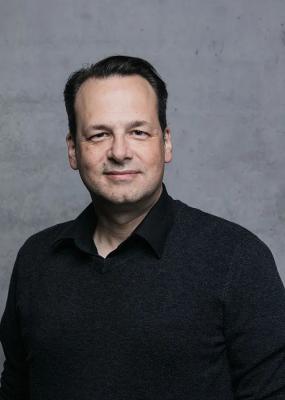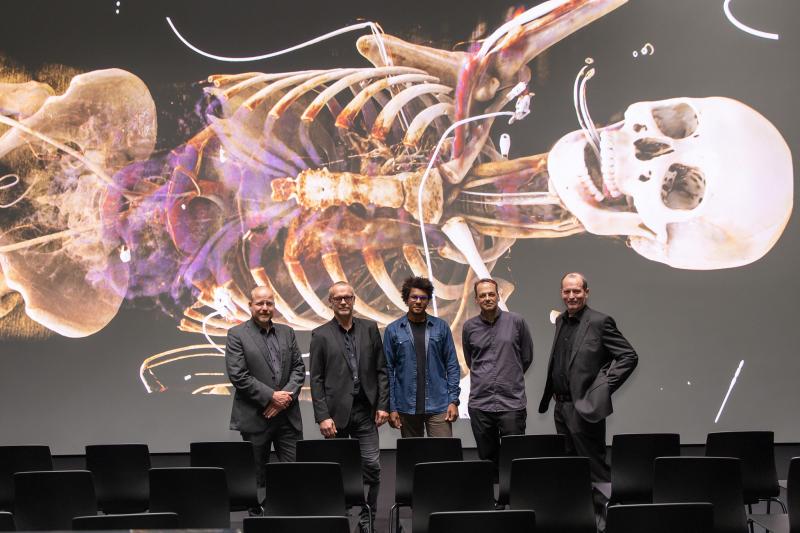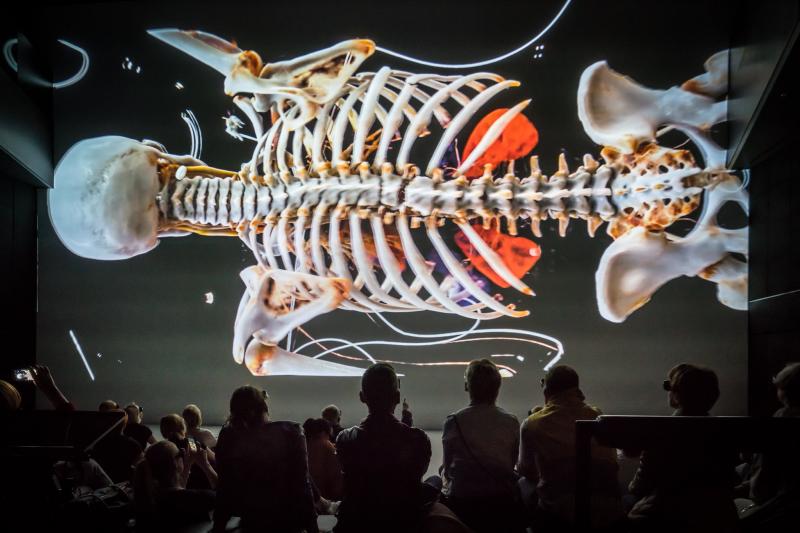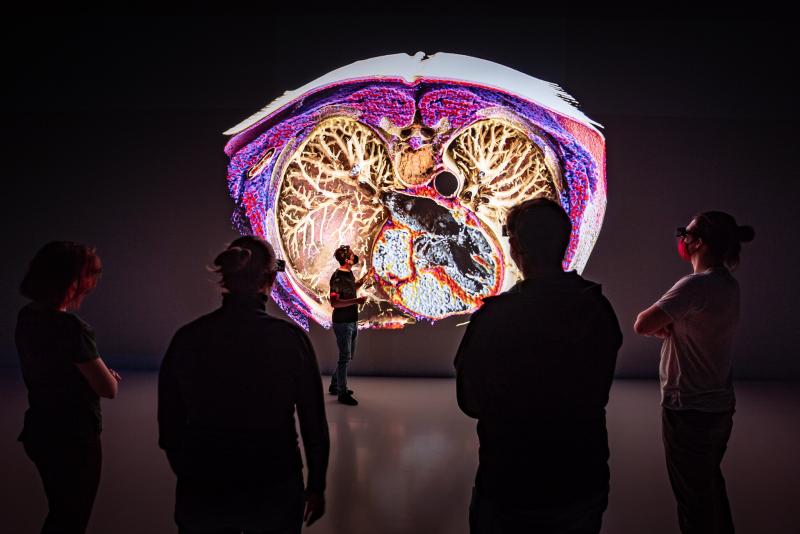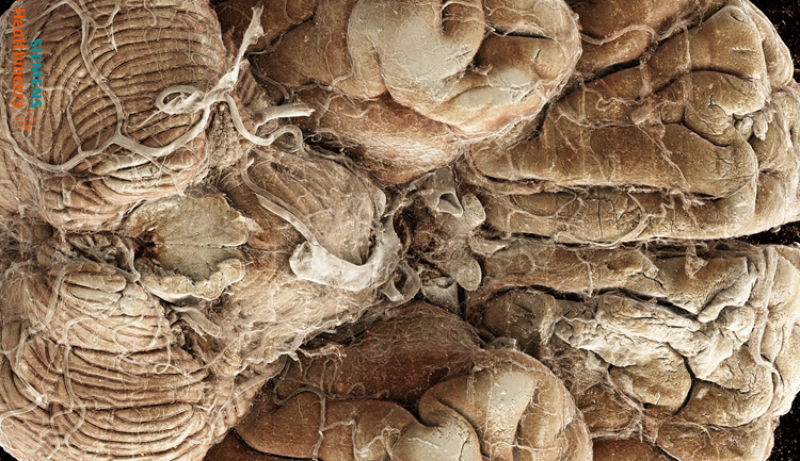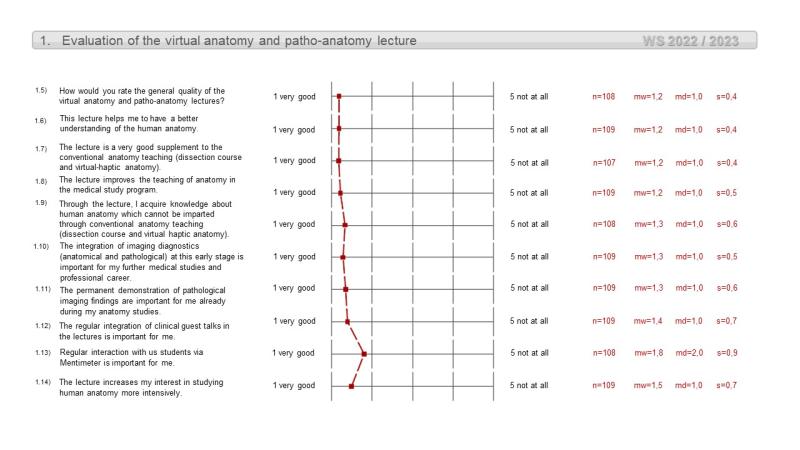The JKU medSPACE is a completely new, worldwide unique venue for teaching anatomy, located at the Johannes Kepler University (JKU) in Linz. Developed and implemented by the Ars Electronica Futurelab in cooperation with Prof. Franz Fellner from the JKU and Siemens Healthineers, the JKU medSPACE shows anatomy like never before: in quadruple stereoscopic 3D 4K projection at 14×7 meters. Lecturers and students dive into larger than life, photorealistic 3D images, razor-sharp from all angles and seamlessly zoomable.
The JKU medSpace is operated with the software Virtual Anatomy from the Ars Electronica Futurelab, which is based on the Cinematic Rendering method from Siemens Healthineers and implements a novel and patented interactive volumetric Monte Carlo Path Tracing algorithm for scanned human anatomy. In 2022, Virtual Anatomy received the prestigious E&T Innovation Award as “Best Emerging Technology of the Year” as well as the silver medal in the category “Most Innovative Solution in Digital Health and Social Care”.
The JKU medSPACE – lecture hall, laboratory, forum and stage at the same time – is a perennial collaborative research project. Here, medical professors teach anatomy in a completely new way: Students and professors wear 3D glasses to inspect the human body: Organs and blood vessels, muscles and tendons, bones and ligaments, as well as tumors and injuries can be magnified to tiniest details as three-dimensional objects in razor-sharp clarity.
The JKU medSPACE is an example of how expertise in different fields, artistic input, curiosity and openness create a breeding ground for important innovation.


